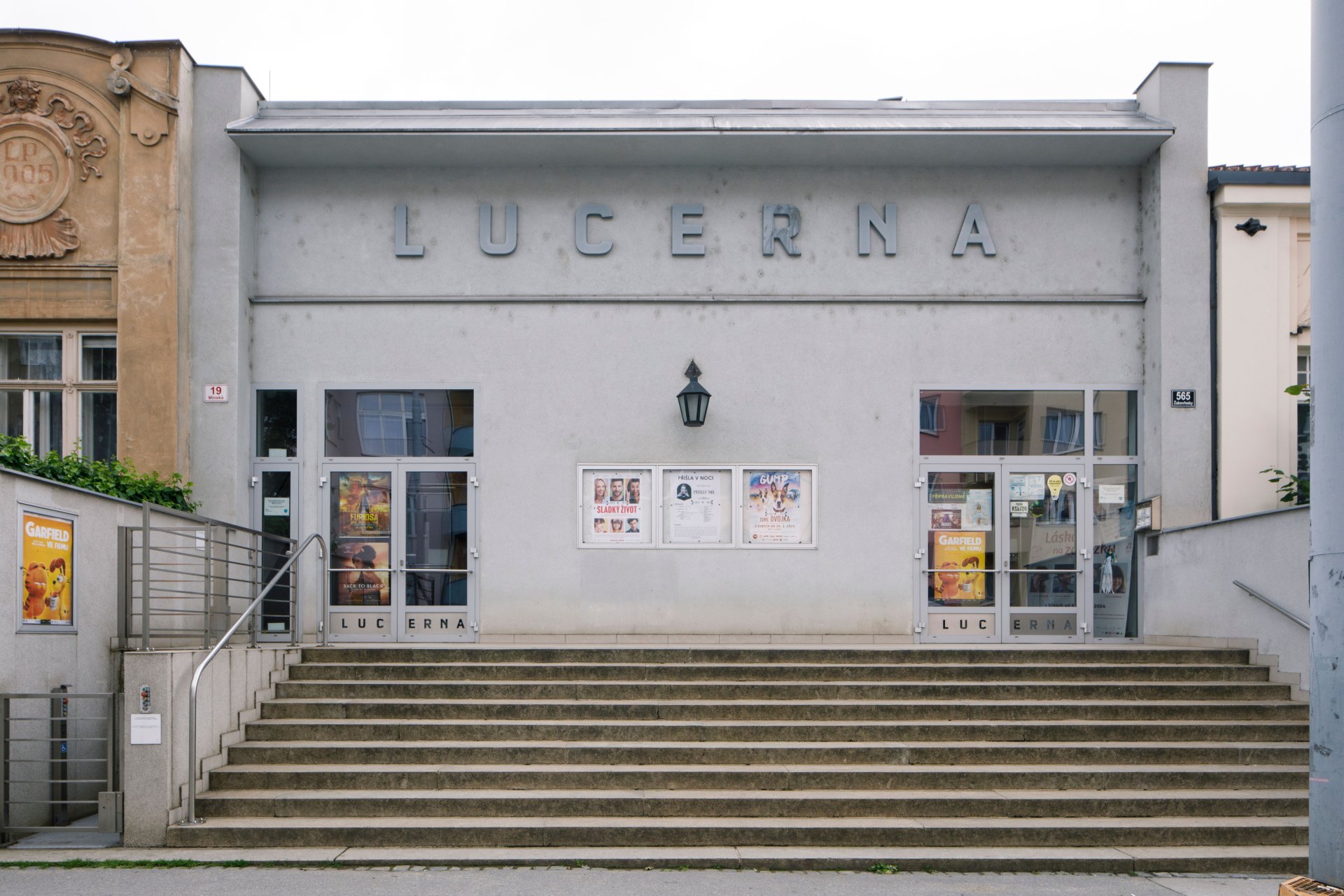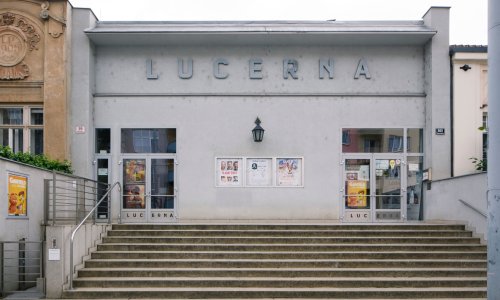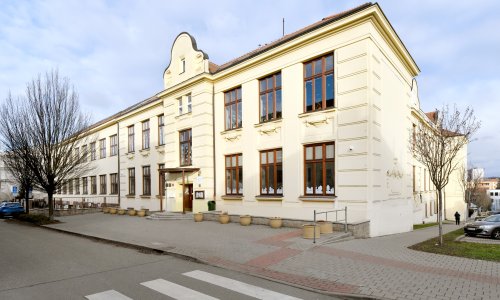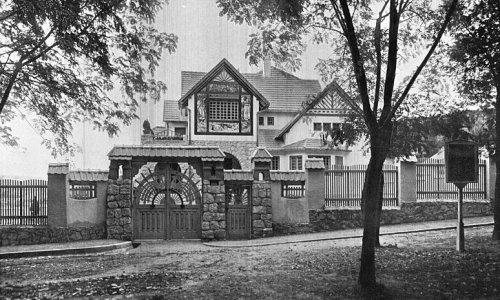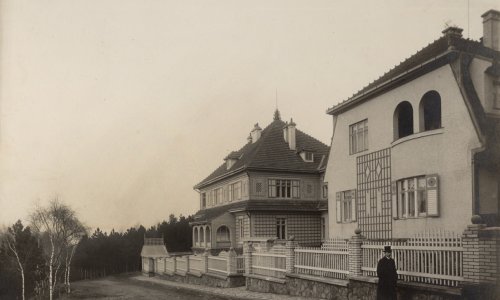Žabovřesky 1900–1918
The Žabovřesky trail begins on the erstwhile border of this formerly independent town, from where a trade route led to Veveří Castle. Beginning in the late 19th century, the area around Tábor was gradually built up with rental housing, one of the most distinctive examples being Antonín Müller’s corner building.
The old trading road, today’s Minská Street, is lined on the left by interesting smaller family houses and the Kino Lucerna cinema (originally the Bio Aladin). The area’s urban development is symbolized by the school building on Sirotkova Street and the small chapel built by the local developer Tomáš Němeček at the very heart of Žabovřesky.
The second part of the walking tour looks at two very different projects near the former Imperial Forest, today the Wilson Woods (Wilsonův les). In the early 20th century, the architect Dušan Jurkovič purchased several parcels at the foot of this hill with the intention of establishing an artists’ colony along the model of the Darmstadt Artists’ Colony in Germany. The first structure he built was his own villa with a studio, where he hosted exhibitions and social gatherings. This absolutely unique building featuring elements of folk architecture is today open to the public. In the end, Jurkovič only built this house and one neighbouring villa.
The trail continues to the upper part of the forest, where in the 1910s the Brno Civil Servants’ Building Cooperative initiated construction of the so-called Czech Civil Servants’ Quarter featuring a number of family houses by the architect Valentin Hrdlička. The development was envisioned as a response to the German civil servants’ quarter (the ‘Beamtenheim’) that had begun growing at the foot of Žlutý kopec (Yellow Hill) in the late 19th century.
Lucie Valdhansová
Name
Žabovřesky 1900–1918
Length
2,5 KM
Number of objects
18
Trail Starts Here
Veveří 2214
First object
U Zlaté žáby (apartment building of Antonín Müller)
B078
GPS
Download as GPX file
Download as KML file
